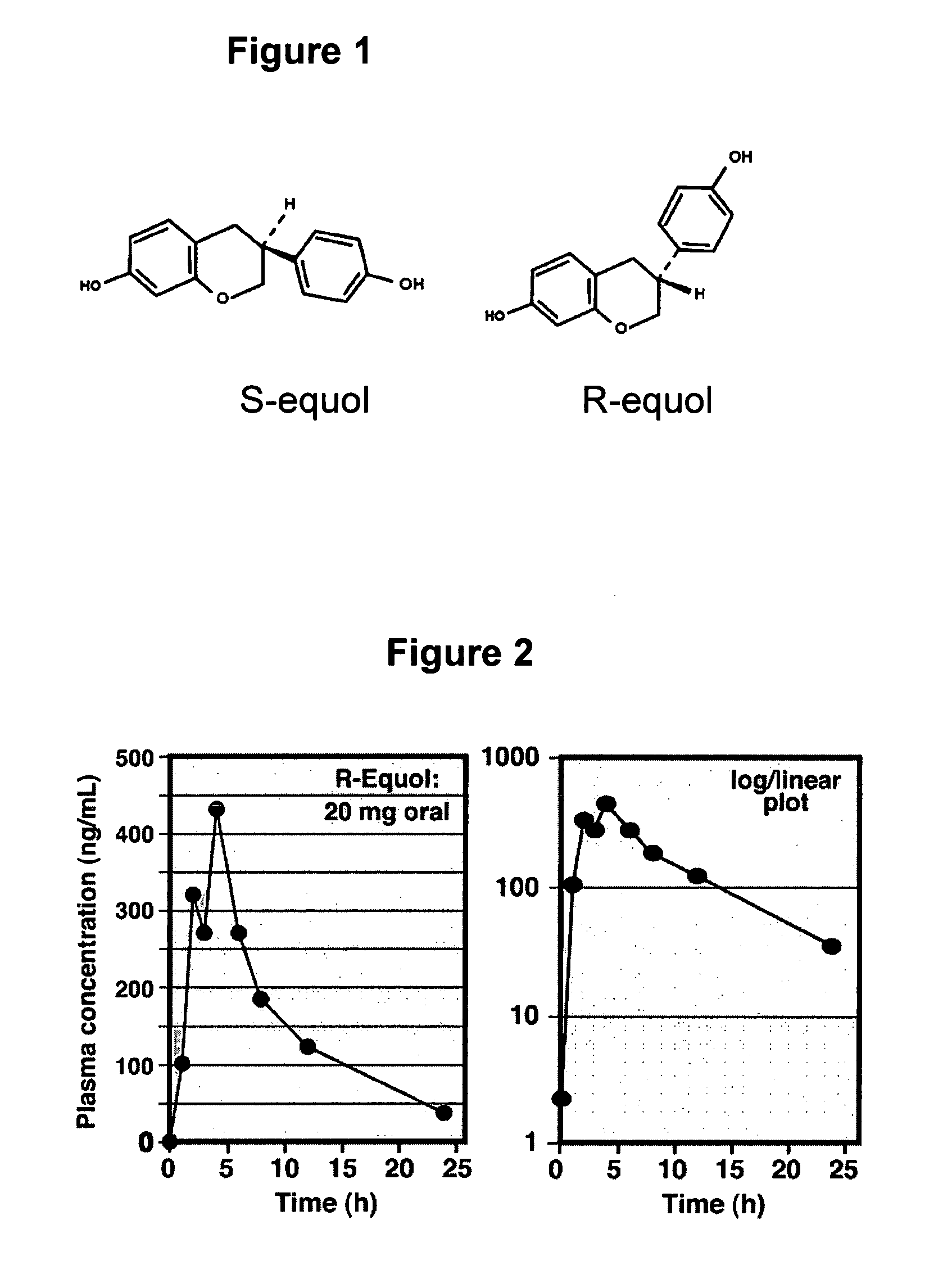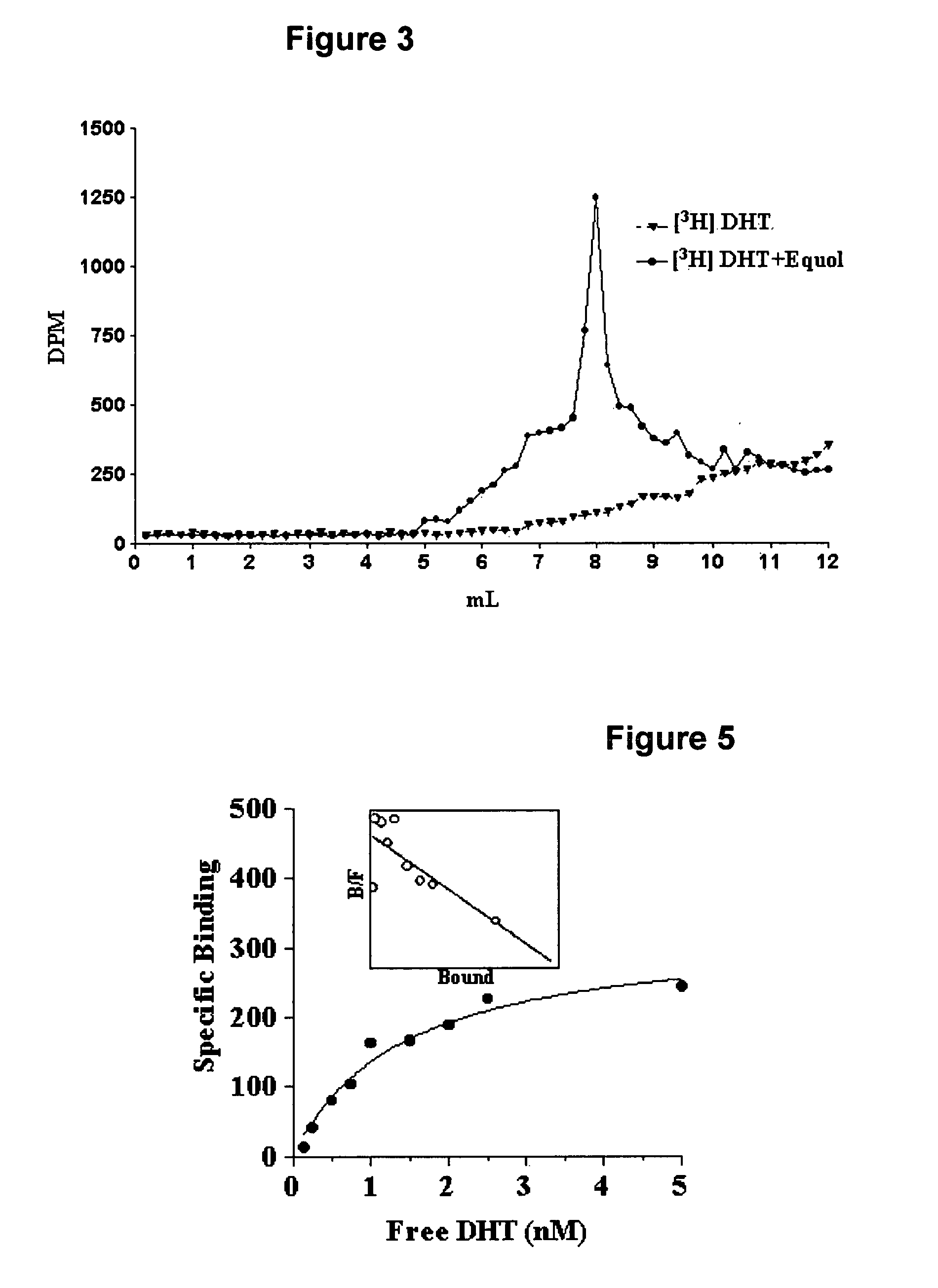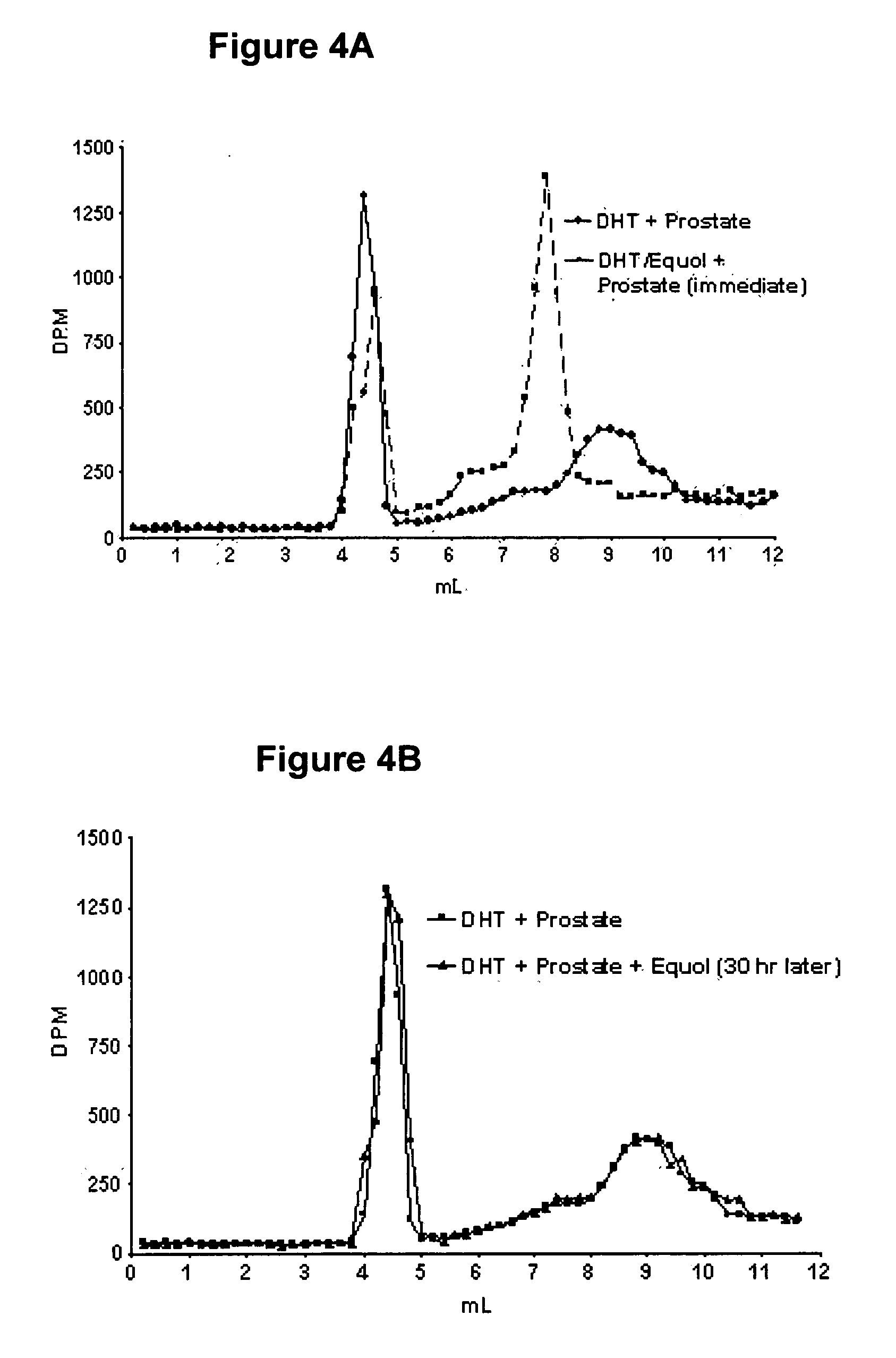Use of equol for treating skin diseases
a technology of equol and equol, which is applied in the field of skin diseases and skin diseases, can solve the problems of unclear whether the inhibition of 5-reductase will have a deleterious impact on the system, and the testosterone is not present, so as to improve skin appearance, prevent wrinkles in skin, and enhance glycoaminoglycans
- Summary
- Abstract
- Description
- Claims
- Application Information
AI Technical Summary
Benefits of technology
Problems solved by technology
Method used
Image
Examples
example 1
[0156] This example demonstrates equol selectively binding in vitro to 5α-DHT. In initial binding competition studies conducted to determine and establish equol's binding affinity for AR, binding of [3H] 5α-DHT was greater in the presence of equol than in its absence. Slight modifications in the protocol where AR was removed from the incubation tube (leaving only [3H] 5α-DHT and equol) resulted in the elution of [3H] 5α-DHT into the eluate containing [3H] 5α-DHT reaction complex. Sephadex LH-20 columns of 30 cm are used in order to identify elution peaks establishing the binding of [3H] 5α-DHT to equol. As shown in FIG. 3, a peak of [3H] 5α-DHT is apparent in the elution fractions between 5 and 9 mL when the [3H] 5α-DHT+equol column incubate is applied. This peak is not present when [3H] 5α-DHT alone is applied to the column. Furthermore, when 5α-DHT or 5α-DHT+equol are incubated with prostate supernatant and then passed through the 30 cm column (FIG. 4A) two distinct binding peaks ...
example 2
[0158] Long-Evans male rats are raised on either a phytoestrogen-rich diet containing 600 micrograms of isoflavones per gram of diet or 600 ppm of isoflavones (referred to hereafter as the “Phyto-600” diet) or a diet containing very low levels of isoflavones (referred to hereafter as the ‘Phyto-Free’ diet; containing approximately 10 ppm of isoflavones). To demonstrate that circulating isoflavone levels are different in Phyto-600- vs. Phyto-Free-fed male and female (75 day-old) rats, serum isoflavone levels were determined by GC / MS as previously performed by our laboratories (see methods in K. D. R. Setchell, Am J Clin Nutr 129:1333S-1346S, 1998; and K. D. R. Setchell et al, J Nutr 132:3577-3584, 2002.). In each case for the different classifications of isoflavones Phyto-600-fed males display significantly higher isoflavone levels compared to Phyto-Free-fed values, shown in TABLE 5 as isoflavone concentrations in adult male and female rats. More importantly, equol levels in the Phyt...
example 3
[0160] Prior to initiation of a Phyto-Free diet period, Male Long-Evans rats are fed a Phyto-200 diet, as described in previous examples. The rats are placed on a diet containing the Phyto-Free diet at approximately 52 days of age and randomly assigned to three groups. Beginning at 73 days of age, rats receive daily subcutaneous 0.1 cc injections of vehicle (peanut oil), 1 milligram of a racemic mixture of equol in vehicle (0.83 mg / kg body weight / day), or 5 milligrams of a racemic mixture of equol in vehicle (4.2 mg / kg body weight / day) once every three days. To determine whether equol injections have an adverse effect on male reproductive organs, testis weights are quantified in these animals. There are no significant alterations in testes weight with the equol injections, with testicular weight essentially the same among the injection treatment groups, shown in FIG. 8.
[0161]FIG. 9 shows the distribution in human skin of estrogen receptor beta (ER-β), the 5α-reductase enzyme (5α-R)...
PUM
| Property | Measurement | Unit |
|---|---|---|
| weight | aaaaa | aaaaa |
| concentrations | aaaaa | aaaaa |
| weight | aaaaa | aaaaa |
Abstract
Description
Claims
Application Information
 Login to View More
Login to View More - R&D
- Intellectual Property
- Life Sciences
- Materials
- Tech Scout
- Unparalleled Data Quality
- Higher Quality Content
- 60% Fewer Hallucinations
Browse by: Latest US Patents, China's latest patents, Technical Efficacy Thesaurus, Application Domain, Technology Topic, Popular Technical Reports.
© 2025 PatSnap. All rights reserved.Legal|Privacy policy|Modern Slavery Act Transparency Statement|Sitemap|About US| Contact US: help@patsnap.com



